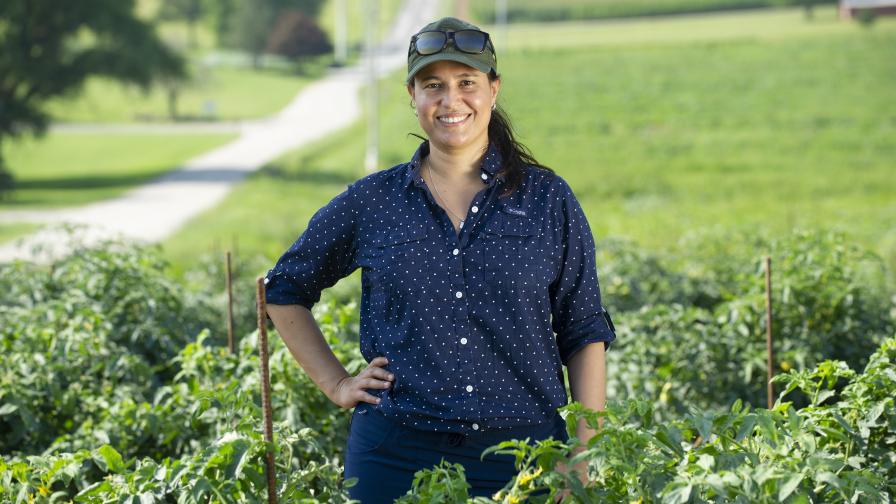You Should Listen to Walnut Trees Before Irrigation Application
Ken Shackel vividly recalls initially presenting his research report showing walnuts could benefit from deficit irrigation.
“Nobody believed us! Their jaws were on the floor,” he says of the annual meeting where University of California (UC) nut researchers show off their latest work. “Walnuts are the poster child for not wanting deficit irrigation. It’s assumed they need lot of water, so it was a real hard pill to swallow.”
Slowly but surely, however, Shackel, Professor of Plant Sciences at UC Davis, is dispensing those pills in the form of a lot of research. But he recognizes it’s going against many commonly accepted notions.
“With walnuts historically, it was thought that they don’t want to be dry,” he says. “It goes back to the fact they are native to wet areas of China. It was the poster child for the tree that can never be stressed.”
There was also the fact that in the past, UC Cooperative Extension researchers irrigated walnuts less and got less yield. Shackel says that’s because they defined how much water the trees need as a certain percentage of evapotranspiration (ET).
“We decided, let’s wait until the plant tells us it needs water,” he says. “All approaches based on standard irrigation will get less yield with less water every time. But if you let the plant tell you, you might use more or less water, but it will be the plant that dictates it.”

Daily California Irrigation Management Information System values for orchard water requirements were calculated beginning on April 1, based on current walnut crop coefficients, for each site and year, and averaged. Irrigation applied to all delayed treatments for each site and year were averaged for 10-day periods over the same seasons.
LESS WATER, HIGHER YIELD
Usually, Shackel finds that walnuts want less water, and they’ll often produce more yields. Trees in a Red Bluff, CA, orchard that were given an early start of irrigation (late April) showed more water stress at harvest than trees that were given a delayed start of irrigation (late May/early June). Surprisingly, he says this occurred despite the fact that the delayed start trees received substantially less water (about 28 inches over the course of the growing season) than the early start trees (about 38 inches).
“It’s getting more and more surprising what you can do with water when you ask the tree how it’s feeling,” he says. “We saved 10 inches this year, about what the San Joaquin Valley gets in a given year.”
The Red Bluff orchard is on a deep silt-loam/fine sandy-loam soil, but similar results are being found in one Stanislaus County orchard on a heavier clay soil and one orchard in Western Tehama County on stratified soils, with gravelly subsoils and much lower water-holding capacity.
The Stanislaus orchard was particularly interesting in that the researchers found the trees had access to water they didn’t account for, because it’s commonly thought a heavy clay layer will stop the roots.
“But it turns out that orchard needed less water than the first one with perfect soil because the tree roots dipped into the clay for water,” he says. “This might open growers’ eyes to soils they thought were
no good.”
PRISONERS OF HABIT
Even so, there’s another reason Shackel has been having a difficult time getting buy-in. It’s not just the science. As a practical matter, growers understandably want to schedule all their activities. Shackel is telling growers not to schedule irrigation, that even with all his expertise, he can’t tell them when.
“I say, ‘Don’t ask me. Ask the tree,’” he says. “That’s my motto.”
Shackel says asking the tree means taking readings with devices such as pressure bombs, because you have to check the stem-water potential, and perhaps that’s another big stumbling block.
“It might be a new gadget to them, and growers are inundated with millions of new gadgets in farming. They’re always faced with a lot of sales folks,” he says. “Maybe when they hear university faculty, it may be the same thing. Maybe I’ve become a broken record when it comes to stem-water potential.”
Shackel thinks the chief roadblock to listening to the trees when it comes to watering is simply that growers can’t schedule irrigations, even though they may be irrigating at the wrong times.
“This approach is more reactive, but that’s necessary,” he says. “Trees don’t take weekends off, and they don’t know if the Fourth of July is coming.”









